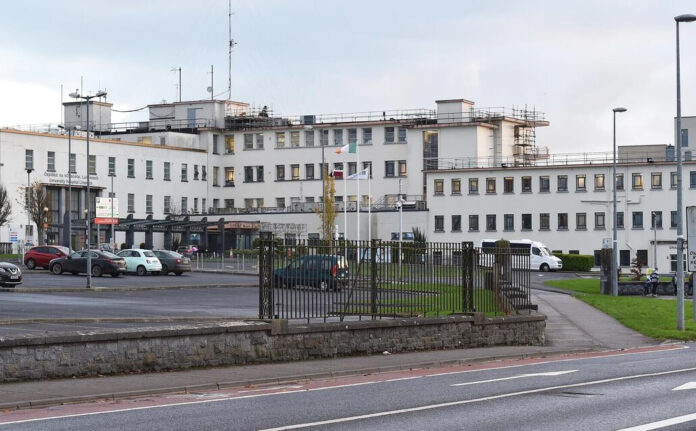
A NEW 350-bed acute hospital in Ennis would solve the current overcrowding problems at University Hospital Limerick (UHL), according to a new independent study.
And, such a facility would and save West Clare patients who currently have to make a round trip of up to 150 kilometres for treatment from missing crucial appointments and suffering stress.
The study was conducted by Ennis-based academic and University of Limerick researcher Sinéad Madden, in response to a call by Minister for Health Stephen Donnelly for insights into the severe overcrowding at UHL.
Her findings also advocate for the reopening of three emergency departments and new a Model 3hospital to serve West Clare areas like Kilrush and Kilkee.
The newly-published Hybrid Simulation Modelling Lab study reveals urgent and pressing needs for expanded hospital capacity and resource redistribution within the Mid West.
Titled “A Preliminary Quantitative Analysis and Strategic Approach to Emergency Department Overcrowding at University Hospital Limerick,” the study responds to Minister of Health Stephen Donnelly’s request for an independent review.
“We find that if you take Clare out of the system, that will leave County Limerick fit for purpose for its own population,” Ms Madden said in an interview with RTÉ Radio’s News at One.
Stressing that the new hospital in Ennis needs to cater for acute care, she pointed out the Irish national hospital bed to population ratio is half that of other EU countries.
Clare has a population of 127,000, and Ennis is the sixth largest town in Ireland.
The study comes as a HIQA report on hospital needs in Ireland’s Mid West region is due to be released in summer 2025
The UL academic’s study highlights the need for critical interim actions to redistribute over 37,000 emergency department (ED) attendees from UHL to regional hospitals in Ennis and Nenagh, aligning with a decentralised approach for equitable healthcare delivery under Slaintécare.
Currently, UHL is the only critical care Model 4 hospital serving the whole of counties Limerick, Clare, and Tipperary.
The study’s other key findings include Ennis, with demand nearly three times higher than Nenagh, being identified as a critical site for healthcare expansion.
Remote areas like Kurush and Kilkee are comparable with Nenagh and may require a Model 2/3 facility to reduce future pressure on Ennis and UHL, the study claims.
By 2031, the region is expected to face a 128-bed deficit, with an additional 199 outdated Nightingale ward beds needing replacement, totalling 327 beds not addressed in the current Acute Hospital Inpatient Bed Capacity Expansion Plan 2031.
By 2031, the report suggests, meeting national standards (still half that of EU averages) would require 613 beds for County Limerick, 402 for County Clare, and 221 for North Tipperary.
Projections indicate a 2031 surplus of 321 beds in County Limerick, with 199 required to replace unfit Nightingale ward beds. This leaves 122 beds available for redistribution to balance healthcare equity.
The study states that “redistributing 37,252 ED patients annually from UHL to Ennis and Nenagh would provide immediate relief, requiring 85 in Ennis and 43 beds in Nenagh specifically”.
“Although Nenagh has sufficient bed capacity, Ennis needs 34 additional beds, and both lack operating theatres, although Ennis is currently under the appraisal stage for two operating theatres in the 2024 Capital Plan.
“124 planned bed expansions designated for UHL and St John’s in County Limerick could be reallocated in the interim to underserved areas like Ennis for improved local access.”
The study advocates building a 352-bed Model 4 hospital with an ED in Ennis to address long-term needs.
“This is comparable to UHL’s capacity in 2014, which operated as a Model 4. Considering the ageing population, this new facility could operate as a centre of excellence and a teaching facility for senior care,” Ms Madden says.
Ms Madden, the founder of Hybrid Simulation Modelling Lab, said that the findings of her study “are a stark reminder of the challenges facing our healthcare system in the Mid West region”.
“We can act in the short term by redistributing pre-allocated resources and expanding capacity with 327 newly allocated beds in the long term, ensuring patients across the Mid West can access the care they need.”









